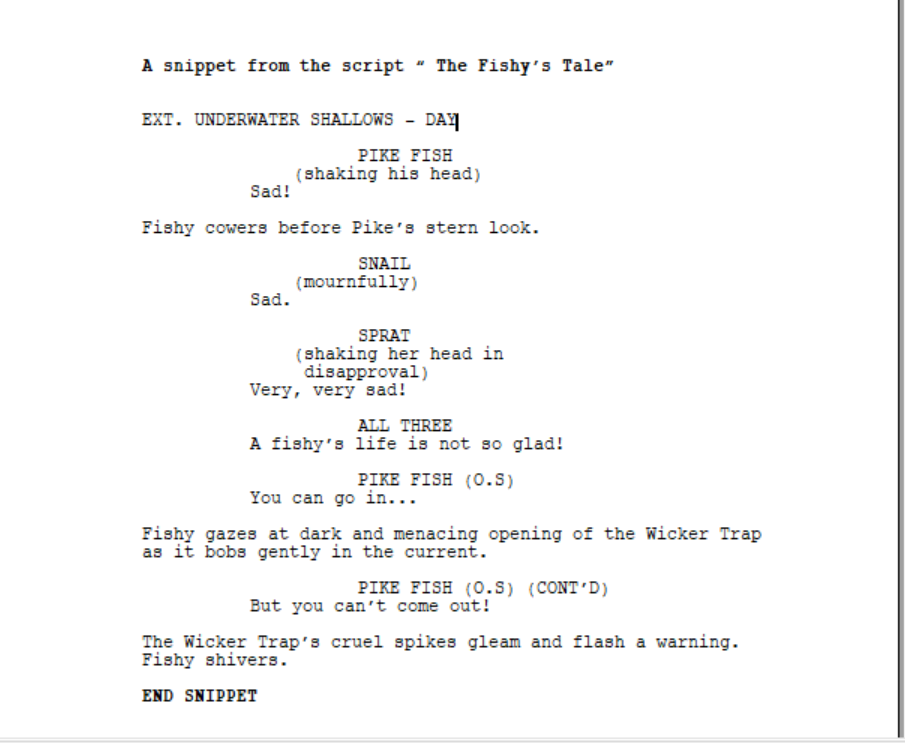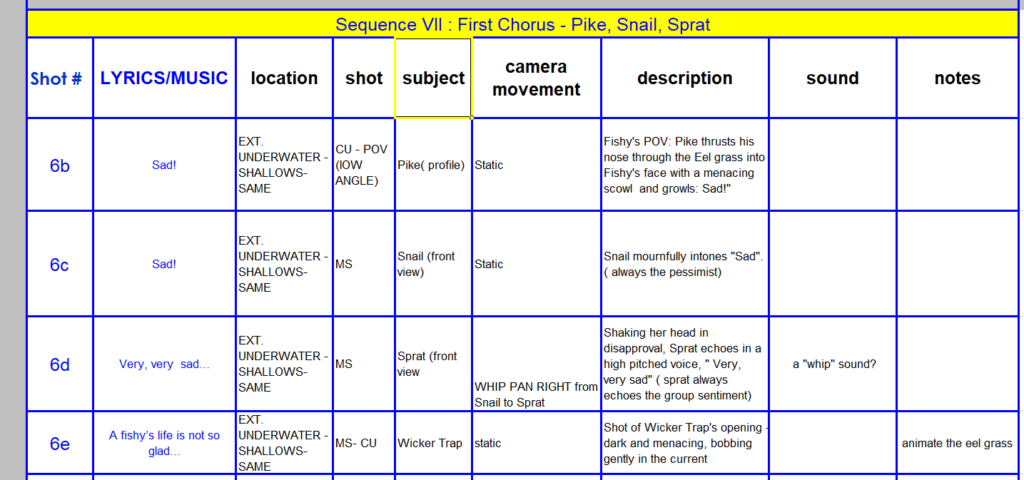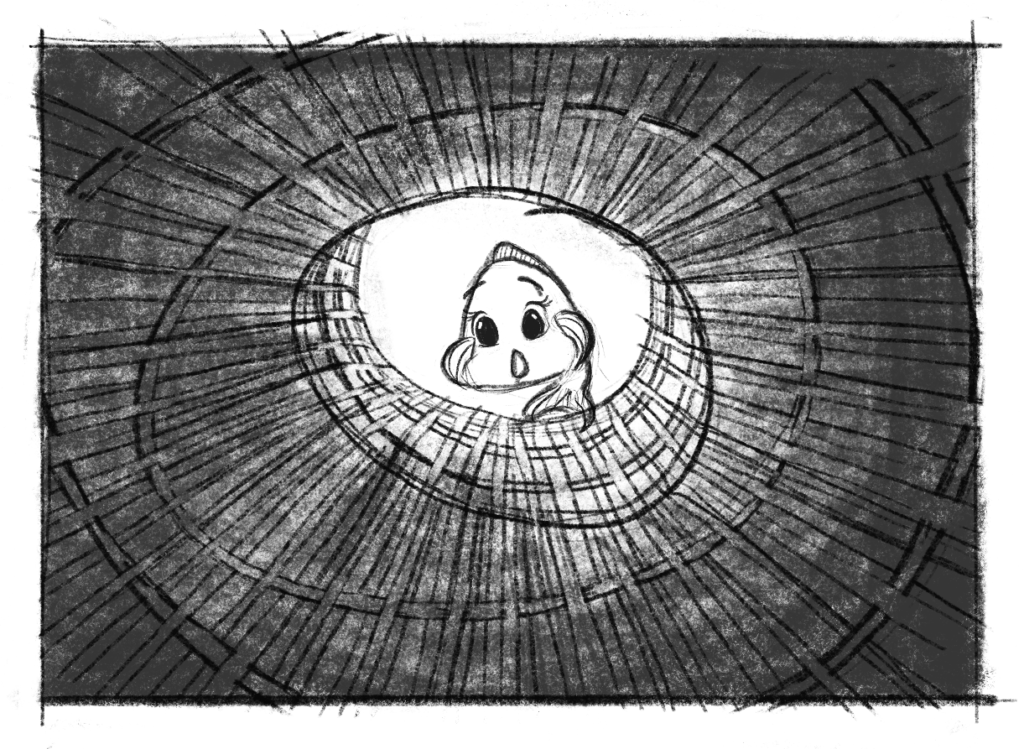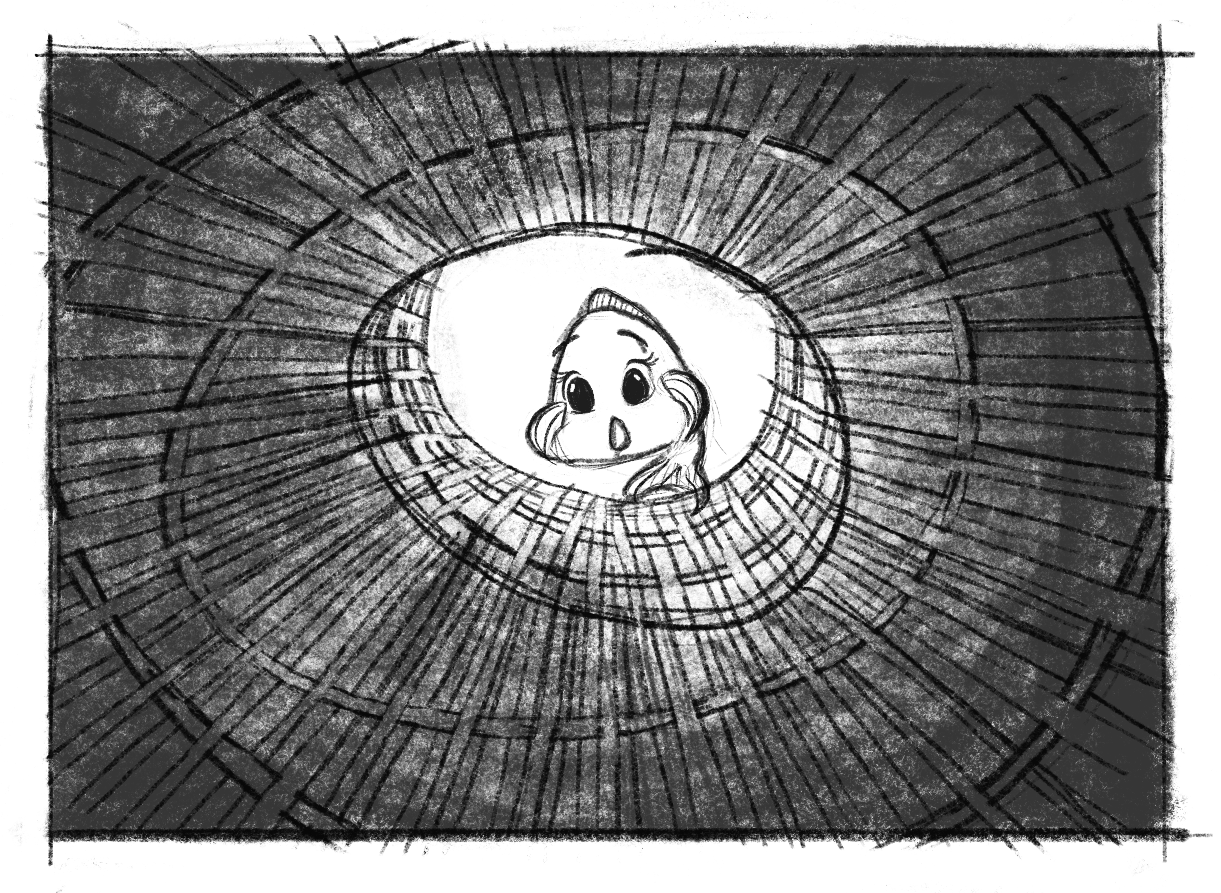Taking Flight: STORY IDEA to SCRIPT
Developing a story idea usually involves crafting a logline and writing up a short one page treatment; however, in this case, I already had completed song lyrics which told a narrative tale of sorts. What I needed now was a fully-fleshed out, structured plot with dynamic characters. My song was a cautionary tale that warned of the dangers that humans and their nefarious wicker trap posed to unsuspecting “fishies”. Now, I had to figure who was telling this tale and why? Who was listening to this tale and how would this information change them? A quick bit of online research about Baltic Sea fishing helped narrow things down and Pike and Fishy (a juvenile Perch) emerged as the story’s main characters. Naturally, the wicker trap and the fisherman became the villains since they posed a threat. Eventually, the secondary characters of Sprat and Snail poked their heads out of the eel grass and clamored to be in the story as well. As the profile of these animated characters came into focus, I wrote up a character list with a brief description of each one. It helped to clarify their distinctive personalities. The character list proved to be a useful reference tool once I began working with illustrators on character design. It’s important be able to quickly and succinctly summarize a character’s personality for the character designers and animators.

SCRIPT FORMAT
Next, I wrote up the story as a short film script. When you write a script for T.V or Film, you need to follow a specific, industry standard format. For example, dialogue is centered whereas slug lines which indicate scene location are all in caps. The easiest and most prudent thing to do is to download a script writing software program. There are a number of ones to choose from, but I went with www.finaldraft.com which is pretty much the industry standard. It’s not cheap, but consider it an investment in your career or avocation as a filmmaker. Or, you can try your luck with a free software program. Check out www.studiobinder.com. When I tried it some years ago, it was great, but I recall there was a catch. Your script had to be under 10 pages or something like that. If you’re doing a short film that might just be the ticket! Regardless, it’s worth checking it out. Just don’t get overwhelmed by their website; it’s easy to geek out at all the incredible filmmaking resources studiobinder provides. Don’t’ get lost in the glitz, focus on your story!
Keep in mind, that film plots traditionally have 3 acts whereas TV episodes and plays use a 5 act structure. If you’re looking for tips on the craft of story-telling for film or television, I highly recommend reading “The Coffee Break Screenwriter” by Pilar Alessandra. She breaks down writing for film into a series of 10 minute exercises which includes exploring character goals and plot points. Below is a snippet from my script of ” The Fishy’s Tale” using Final Draft script writing software.

THE SHOTLIST
When I first wrote my script for “The Fishy’s Tale”, I didn’t find any resources on how to write an animated short. I just applied what I had learned writing full-length screenplays and shortened it. I had written spec scripts before, but never a shooting script for a musical or animation. I discovered it was a challenge to match Fishy’s sung lyrics to the action taking place on the screen— a lot can happen in few seconds of animation! Some of the time, the lyrics are being sung by a character, but most of the time the lyrics are sung in voice over as the narrative unfolds. Frequently, each line of lyric or even word of lyric could have it’s own corresponding action.
In the end, I found the shot list was more helpful in matching the timing of the sung lyrics to the action. If I was going to direct, I needed a shot list. I did a bit of research online and studied templates of shot lists to see what was needed, then created my own using an EXCEL spreadsheet. Here’s the same snippet of plot as it appears in my original shot list for Fishy.

In the age of viruses, working on an animation proved to have some real advantages. By the time COVID-19 had shut down Broadway and Hollywood Film production, our project had already cast our film and recorded the song and the dialogue. Unlike, a live film or TV shoot, animation can be done 100% online through zoom, google drive, and adobe suite. Working on this creative project with such an awesome team of artists has been a huge bright spot in an otherwise chaotic and scary year. Our culture is so money and ego-driven, that we often lose sight of the things that make us happiest. For artists, the act of creating something is as essential as breathing oxygen. I hope this blog inspires you to take control of your own artistic journey. There’s no time like the present!


Thanks for your blog, nice to read. Do not stop.